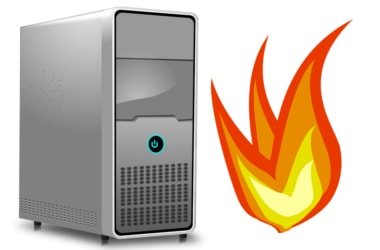
Electronic systems do not work well in heat, apart from some exceptions. Heat is a normal byproduct of electricity. Researchers have evolved a thermal diode which is a computer component that runs on heat instead of electricity.
This could be a step towards heat resistance computers that can function in places that are extremely hot such as Venus or Earth without breaking into sweat.
A regular diode is a key logic component in electronic circuits that permits electricity to flow freely into one direction, but blocks it from moving back the other way.
Crucial components often fail under high temperature or when exposed to ionizing radiation.
Scientists have made hardier computer systems, developing thermal diodes powered by heat and not electricity.
Both heat and electricity are energy carriers. If heat can be controlled, it can be used on computing to avoid overheating.
The team's thermal diode is made up of pairs of surfaces, where one is fixed and another can move towards or away from its stationary partner. Movement is handled with ease by the system to maximize the heat transfer.
While the moving surface is hotter than the still one, it actuates with ease inwards and increases the rate that heat moves to a cooler surface.
When performed at temperatures between 215° and 494° F (102° and 257° C), the thermal diode hit a peak heat transfer rate of about 11 percent, but the researchers reported that the device was able to function at temperatures as high as 620° F (327° C).
The future versions could even operate at up to 1,300° F (704° C), potentially leading to computers that can work under extreme heat conditions.
Even when they're not running in the molten core of the planet, electronics can overheat and damage themselves if they aren't properly cooled by fans or water circulation systems.
More Innovations- Lockheed Martin has tinkered with embedding microscopic water droplets inside chips.
- IBM developed the counter-intuitive technique of cooling with warm water
- Microsoft has turned to the power of the ocean itself to cool a large data centre.
Cloud compute services market is poised to reach US$68.4 billion by 2020.
With the use of components like thermal diodes, the researchers said the wasted heat could be instead fed back into the system as an alternative energy source, improving energy efficacy.
Nearly 60 percent of the energy produced for consumption in the US is wasted in heat. If this heat could be harnessed and used for energy in devices, waste and cost of energy can be cut down on.
Researchers are now working to improve the efficiency of the thermal diode. Diodes are not the only components in electronics and a thermal computer would need the rest of the system to be able to bear those temperatures as well. If high efficiency can be attained, computations can be carried out and the logic system is run experimentally.